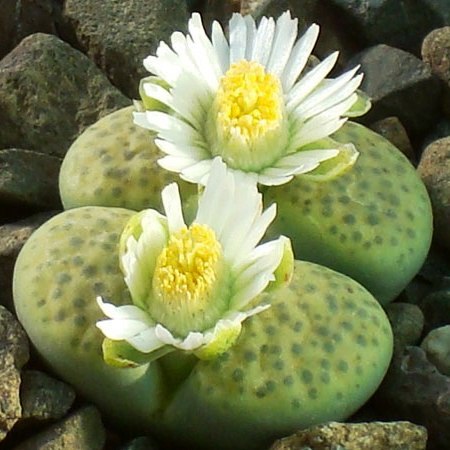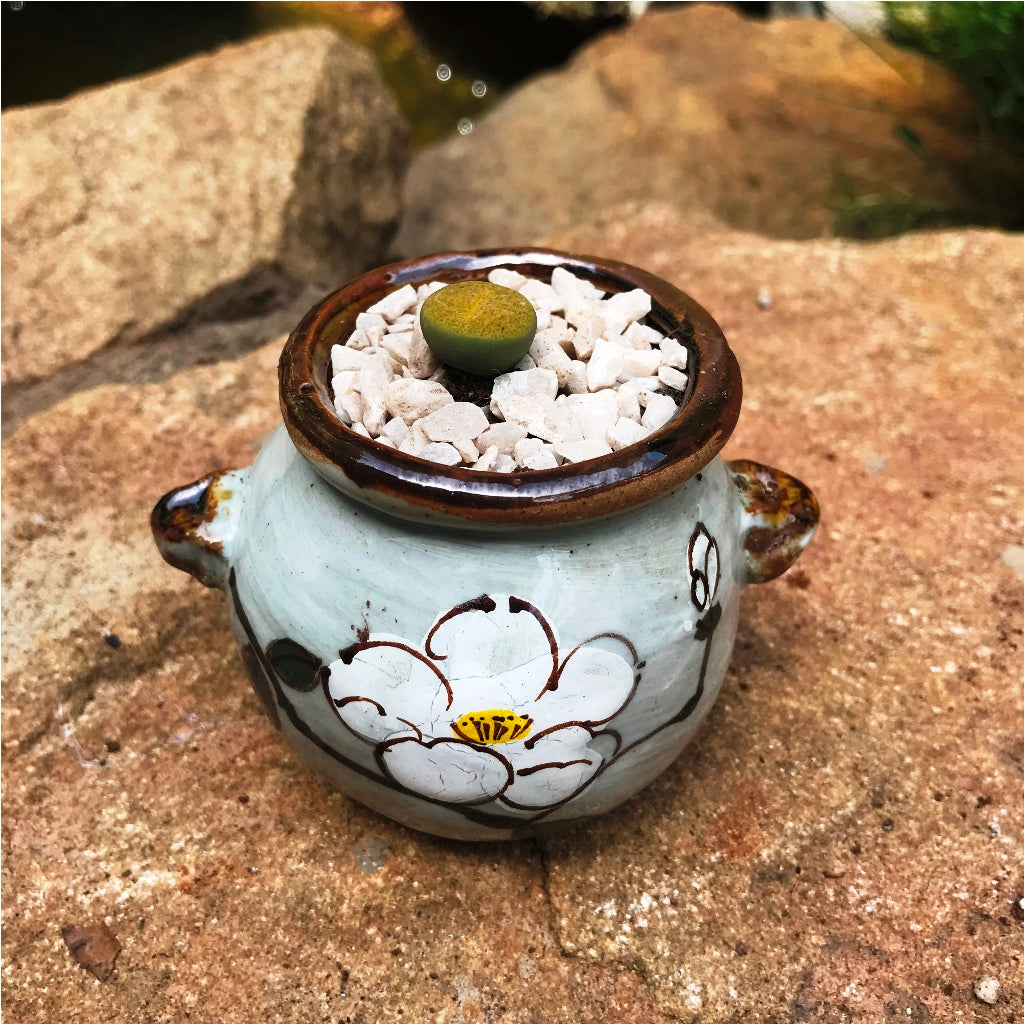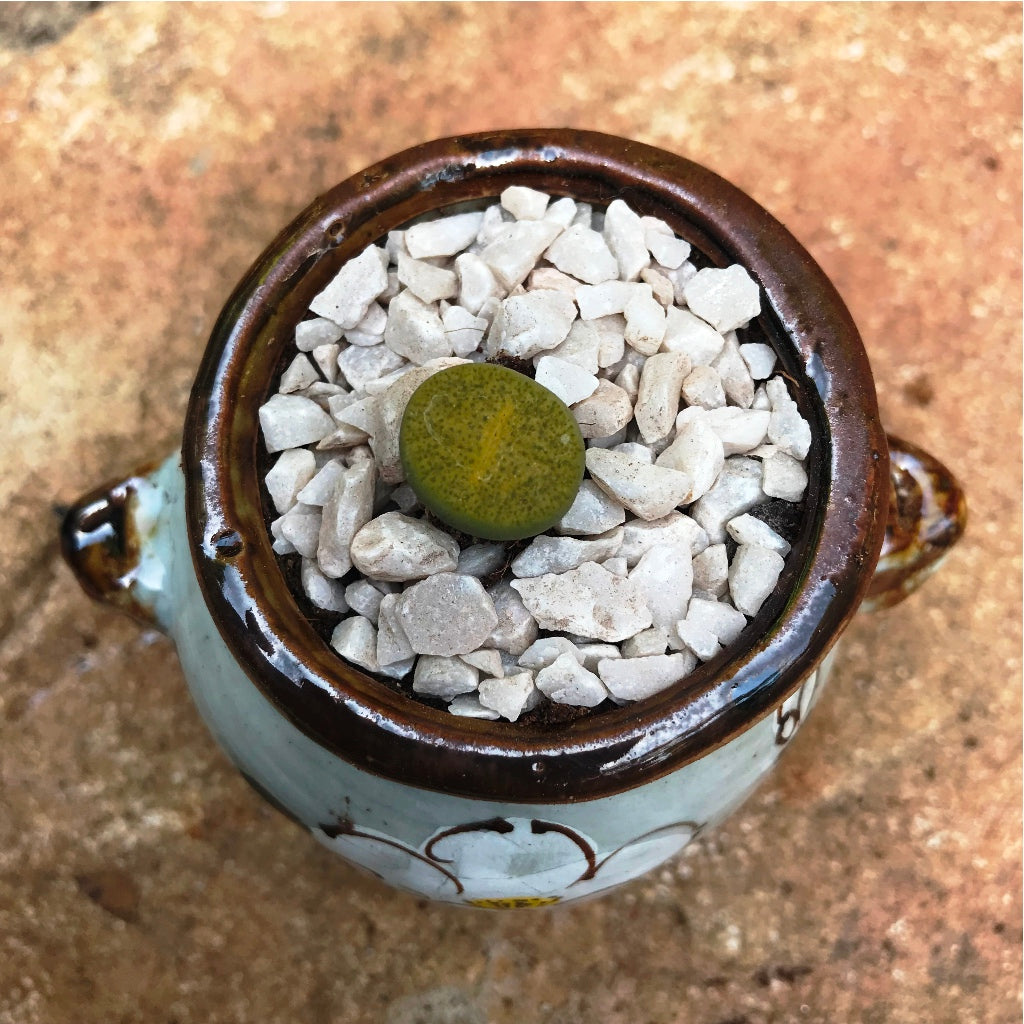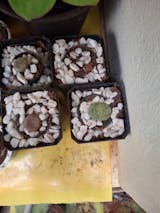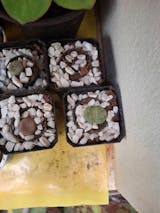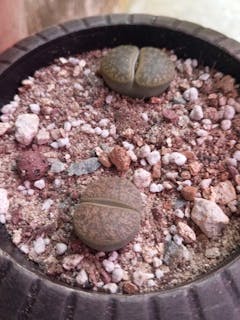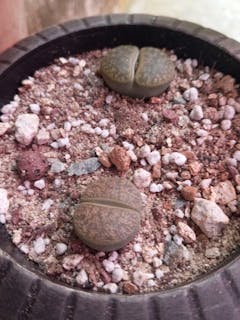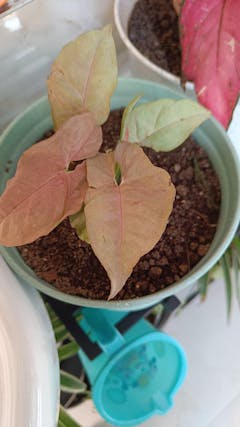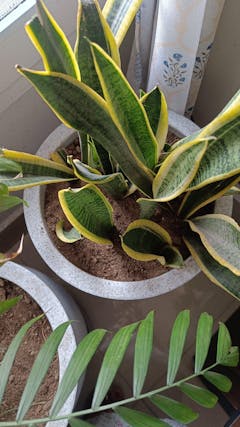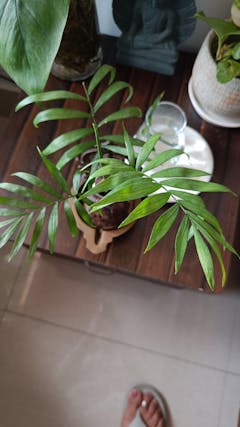Stone Plant
Family
Aizoaceae
Origin
USA & Japan
Description
Lithops plants consist of two fused leaves that form one head. Some species only ever have one head, like L. gracilidelineata, whereas other species such as L. olivacea can form big mounds of many heads with time. From ground level, the leaves taper down to a small, thin, carroty taproot that produces small adventitious roots when water is available. The size of one head ranges from 5-25 mm wide and from leaf surface to root tip, from 50-100 mm, depending on age.
Lithop Fulviceps Aurea is yellowish-green to or creamy-blue green in colour with white flower, but is otherwise the same as var. fulviceps. The dusky dots are raised, dark dull greyish or bluish green.
Environment
They grow in arid desert-like regions that get very little rainfall . They love sun so make sure they are in a south-facing window and when summer rolls around, let them get plenty of filtered light outdoors,plenty of ventilation and protect from rain.
When the plants are a year old, water them once every two weeks in summer and once every 2 months (if necessary) in winter. When the new leaves are pushing though the old leaves, watering should be stopped altogether otherwise leaf pairs start stacking on top of each other. Since the stone plant has such a long tap root,the pot should be at least 3.5-4 deep. Proper drainage is a must so make sure the pot has a hole in the bottom.
Lithops require a loam-based compost with the addition of extra drainage material such as horticultural grit or perlite. Position the plants in the soil so that about three-quarters of the height of the plant remains above the soil level to permit the plant to breathe . Collapse the hole around the taproot by carefully poking a pencil into the soil near the plant. Set a few pebbles among the plants and finally sprinkle a thin layer of coarse sand (or bird gravel) over the exposed soil.
Mealy bug is their worst enemy; if the 'white fluff' is found between the leaves, spray with an insecticide that has either chlorpyrifos or imidacloprid as an active ingredient. They do not need any fertilizer, but a weak solution from time to time won't do them any harm.
Landscape Use
An ideal setting for Lithops is a group planting in a dish garden, intermixed with rounded stones of varous sizes and colors.

